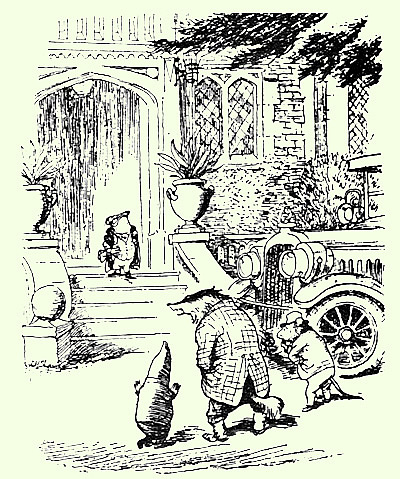Motoring in the Edwardian Era
In the first years of motoring Great Britain lagged considerably behind its industrial rivals France and Germany. The Locomotive Act, which limited the speed of horseless carriages to a meagre 2 mph in towns and 4 mph elsewhere, hobbled any attempts at setting up a car industry for the 31 years following its introduction in 1865. Automobiles were at first very expensive and the additional cost of transporting them from Europe discouraged their import into Britain. It thus fell to a small number of enthusiasts to keep the public aware of the forthcoming revolution. These pioneering souls ran their imported cars often in contravention of the regulations, made headlines in the press, sparked heated debates, and finally started to bring home trophies from races held abroad.
When the speed limit was increased to 14 mph in 1896, motoring in England picked up, and by 1900 the movement had support from some powerful figures in social and public life, such as the future King Edward VII and Prime Minister Balfour, who added to it a fashionable and gentlemanly dimension. It also gained a parliamentary representative in the person of the Hon. John Scott Montague, MP, who in May 1902 launched a high society magazine, The Car Illustrated, which promoted the new mode of transportation and everything associated therewith.
This new magazine appeared just two months after the first issue of Motoring Illustrated, whose founding principle was that “The sport of motoring is followed by the cultured and refined in such large number that it can now easily support a periodical… we firmly believe that such a periodical must help the development of motoring beyond all calculation, and motorists rejoice that the social side of the sport has now adequate representation.”
Increased interest in automobiles had a positive effect on the industry. Dealers of French and German cars found themselves in competition with British manufacturers, who, after acquiring foreign patents, started producing other components and assembling cars locally. Of these, Daimler, Lanchester, Wolsley. Napier and Rolls-Royce were the most distinguished names. The potential owners and general public could see the latest models at numerous exhibitions. The volume of visitors confirmed the growing popularity of motor car and the Crystal Palace Show was considered the most important with visitor numbers doubling from 62,000 in 1902 to 122,000 the following year.
In 1903 a French visitor to the show was struck by “the considerable number of British firms engaged in the industry” and, upon closer inspection of the exhibits, he concluded that the British car-maker “having shown a remarkable ingenuity and skill in presenting new cars of high merit… seems to be in a fair way of monopolising his own market and taking his stand with foreign manufactures in other countries.”
 |
©EHS/EB Ltd 2007 |
It took a few good years for the automobile to change the face of London. For some time self-propelled vehicles and horse carriages had to co-exist in order to cope with the demand for transport. There has possibly never been a period in history when London streets displayed so wide a variety of means of conveyance. The open-topped horse-drawn omnibus, the motor bus, the hansom, the taxicab, the electric tram, suburban railways, the new London underground railway and steamboats on the Thames all carried passengers around the Empire’s capital.
Thus far the domain of the rich – motoring now started to plant seeds in the popular imagination, including that of children. Before publishing his book in 1908, Kenneth Grahame used to tell to his son bedtime stories about a gadget-crazed frog, Mr Toad, who became obsessed with motor cars, causing great concern to Mole, Ratty and Badger - his friends on the riverbank. The Wind in the Willows and its hero Toad, based on the unstoppable and unflappable automobilists of the Edwardian era, became one of the most beloved books of all ages!
